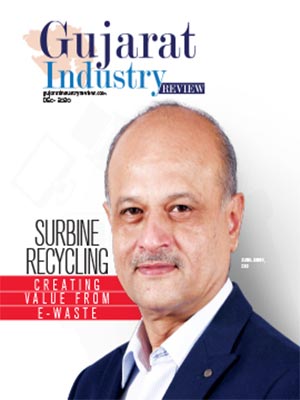Electrification Of The Indian Automotive Industry
Jeffry Jacob, Partner, KPMG
Jeffry Jacob has 19+ years experience in the areas of Strategy Consulting, Operations, Restructuring and large scale transformations, Performance improvement, Six Sigma, Business development and Financial Planning.
Four megatrends are today continuously disrupting the automotive industry, both globally and in India. At Roland Berger, we call them MADE – Mobility, Autonomous Driving, Digitalization and Electrification. Electrification is one of the most disruptive amongst these, as it impacts the entire format of the automotive industry that has operated since inception. It also has consequent impacts on business models, supplier ecosystems, and distribution structures, amongst others.
Most Governments everywhere are today enacting their own emission and xEV targets. Some examples include London’s 2020 Ultra Low Emission Zone which will assess daily fines for high-emission vehicles and Paris’ proclamation of banning all diesel cars by 2020. In China, Beijing has plans to convert all its taxis to xEVs, while Munich & Stuttgart in Germany are contemplating outright ban of diesel vehicles within city limits. In certain cases, these actions have even been in the nature of outright bans, such as China’s target of 20 percent PHEV/BEV sales by 2025 and UK/France Government’s plans to enforce ban on all non-xEV cars by 2040. Similarly, Netherland’s parliament is also proposing a law to end sale of ICE cars by 2025.
"Only with a collaborative approach of all stakeholders and an aligned, pragmatic policy we can successfully move to a fossil fuel free future"
Driven by the aim for sustainable transportation and emission reduction, strong growth is expected in all geographies globally for xEVs going forward. Declining costs of Li-Ion batteries would further increase the attractiveness of xEV for customers, while development of charging infrastructure would be critical to sustain the demand in the market. Globally, China is expected to remain the leader in xEV sales by 2025 with over six million units. xEV sales in Europe are projected to reach 4.8 million, with BEVs accounting for 61 percent, while in U.S., it is expected to reach 4.6 million with PHEV/HEV accounting for 92 percent of xEV volumes. Most countries have traditionally used hybrids as the stepping stone in the shift to pure EVs.
This slow transition allowed time gap for development of charging infrastructure across the countries, while OEMs also got time to make each stage commercially viable and make consequent investments. In India, the Govt. is planning to leapfrog directly to EVs bypassing hybrids. Accordingly, hybrids are no longer eligible for incentives under the recently announced FAME2 schemes.
We see four potential scenarios for EV penetration in India depending on the extent of push/regulatory support from the Government, as well as the increasing TCO attractiveness of EVs. In case of neither sufficient Govt. support nor TCO attractiveness, it may be as low as two percent, whereas on the other hand, with Govt. support and significantly improved TCO attractiveness, it could reach as high as 25 percent. In the most likely scenarios however, we expect xEV penetration of 15-18 percent by 2025.
Electrification though comes with its own set of challenges and disruptions to the ecosystem. For example, with 80 percent fewer moving parts vs. ICE, xEV components will undergo less wear & tear and hence negatively impact aftersales business, potentially to the tune of 58 percent. As for components, engine & exhaust systems would become obsolete, and transmission would undergo significant changes.
At the same time, the electronics complexity is much higher in a battery vehicle as the semiconductor content in BEV is 6-10 times more than that in a traditional ICE vehicle. If local suppliers of traditional ICE components do not adapt their portfolio to compete in the new scenario, they would end-up losing this opportunity to Chinese OEMs and component manufacturers. Chinese players today have a significant share of the global market and several of them already have plans for the Indian market.
India’s AMP (Automotive Mission Plan) targets 14 percent YOY increased employment in the auto component sector to reach 9.4 million direct & indirect jobs by 2026 with cumulative investment of over $43 billion. This is under direct threat if we do not ensure the domestic manufacturing component in our transition to electric mobility. The Government and industry associations therefore have an important part to play in terms of nurturing and guiding the industry on its path to electrification, or else the country faces a massive risk of losing investments and jobs.
Adoption of EVs in India will depend critically on two parameters: the sufficiently rapid decrease of xEV component cost and the consistency and effectiveness of Government support. The Government needs to define a long-term, consistent, technology agnostic and phased plan with targets for xEV in India. It would need to incentivize consumers, OEMs, and suppliers through a combination of financial & non-financial incentives to develop this space. It should support the industry in technology transfers, as well as capability building. Clear standards need to be also defined for charging infrastructure, battery swapping, and testing & validation, in line with global standards.
The onus of preparing the nation for the xEV transition is however not on the Government alone. Auto-component suppliers need to swiftly catch-up on xEV technology and business readiness by technology acquisitions, collaborations and capability demonstrations. They should de-risk their current businesses by pivoting towards future-ready opportunities that leverage their current capabilities. Tie-ups with international partners need to be explored to complement their world-class technology with our own frugal engineering approach. Ecosystems, including research institutions, should be leveraged for non-competitive R&D. OEMs, in turn, need to define an agile xEV powertrain strategy that takes the opportunities and challenges of the Indian environment into account. They should actively collaborate on precompetitive research for the development or acquisition of xEV technologies.
Industry associations need to create awareness among stakeholders regarding the immense challenges that the xEV transition brings, and enable information exchange and collaborations to ensure that the domestic auto-component industry continues to be seen as a high quality partner for Indian and global OEMs. Only with a collaborative approach of all stakeholders and an aligned, pragmatic policy, we can successfully move to a fossil fuel free future.
Read More
The Impact Of Digitization On Textile Manufacturing Operations




